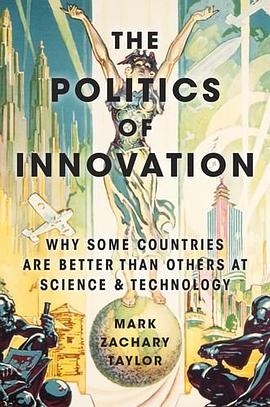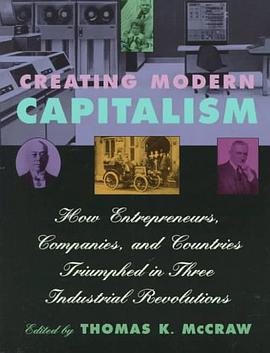深度模仿 豆瓣
模倣の経営学
作者:
[日] 井上达彦
译者:
兴远
后浪 丨 江西人民出版社
2017
- 9
深度模仿即是深度学习
发掘人工智能时代的创新基因
...................
※编辑推荐※
☆一部让日本实现从”Copycat”(山寨鼻祖)到创新大国超越的应时之作
- 深度解构丰田、7-11、强生、任天堂、施乐等公司从优秀到卓越的模仿之道。
- 20世纪90年代之 前,日本经济奇迹的根本经验就是践行深度模仿!
- 优秀的中国制造商正从简单模仿到深度模仿战略转型!
☆世上只有两种创新:一种是模仿式创新,一种是赌博式创新
- 模仿式创新从卓越样本中提取成功基因,引导组织向阻力最小处突进!
- 赌博式创新的试错成本高昂,成为先烈的可能远大于成为先驱!
- 阿里巴巴、腾讯、百度、京东创立之初全部都有国际对标公司,国内没有对标公司的伟大企业,没人见过!
☆深度模仿的方法论全集:4个模式,5个步骤,手把手教你高效创新的技术
- “日本第一”时代的集体经验汇集;日式精细化管理经验合盘托出!
- 模仿第三重境界:走别人的路,让别人无路可走。
☆失去30年后,日本偶像级管理大师沉痛反思:欲创新,先模仿
- 日本衰落的根源在于丢掉了深度模仿的武器!
- 日本复兴制造业的权威教材,中国制造全面崛起的绝佳战术手册!
...................
※内容简介※
只有极少数的天才能通过原创成功,绝大多数企业通过模仿致胜。模仿有两种方式,一种是能带来短期利润增长的产品模仿;一种是能为企业带来长期竞争优势的结构模仿。本书重点介绍的是第二种。
模仿是高效的经营策略,成功者的基因必然暗合时代发展的趋势,找到了可资模仿的范例,也便拿到了通往未来的“车票”。模仿谁?怎样模仿?本书提供了独特的金字塔形分析结构,从企业资源、活动、价值、定位四个方面助你选准模仿对象,并通过总结星巴克、丰田、7-11、强生等16家卓越企业经验,首次提出了从模仿到创新的五个步骤,可操作性极强。
模仿是创造之母,是创新的灵感之源。模仿的范例无处不在,发现成功者的基因,并将其植入自己的组织之内,这本身就是一种创新。而持续的模仿过程中又孕育着超越范例的机会,直至自身的商业模式无人可以模仿为止。
真正有创新力的组织,不是不模仿,而是无法被人模仿。
发掘人工智能时代的创新基因
...................
※编辑推荐※
☆一部让日本实现从”Copycat”(山寨鼻祖)到创新大国超越的应时之作
- 深度解构丰田、7-11、强生、任天堂、施乐等公司从优秀到卓越的模仿之道。
- 20世纪90年代之 前,日本经济奇迹的根本经验就是践行深度模仿!
- 优秀的中国制造商正从简单模仿到深度模仿战略转型!
☆世上只有两种创新:一种是模仿式创新,一种是赌博式创新
- 模仿式创新从卓越样本中提取成功基因,引导组织向阻力最小处突进!
- 赌博式创新的试错成本高昂,成为先烈的可能远大于成为先驱!
- 阿里巴巴、腾讯、百度、京东创立之初全部都有国际对标公司,国内没有对标公司的伟大企业,没人见过!
☆深度模仿的方法论全集:4个模式,5个步骤,手把手教你高效创新的技术
- “日本第一”时代的集体经验汇集;日式精细化管理经验合盘托出!
- 模仿第三重境界:走别人的路,让别人无路可走。
☆失去30年后,日本偶像级管理大师沉痛反思:欲创新,先模仿
- 日本衰落的根源在于丢掉了深度模仿的武器!
- 日本复兴制造业的权威教材,中国制造全面崛起的绝佳战术手册!
...................
※内容简介※
只有极少数的天才能通过原创成功,绝大多数企业通过模仿致胜。模仿有两种方式,一种是能带来短期利润增长的产品模仿;一种是能为企业带来长期竞争优势的结构模仿。本书重点介绍的是第二种。
模仿是高效的经营策略,成功者的基因必然暗合时代发展的趋势,找到了可资模仿的范例,也便拿到了通往未来的“车票”。模仿谁?怎样模仿?本书提供了独特的金字塔形分析结构,从企业资源、活动、价值、定位四个方面助你选准模仿对象,并通过总结星巴克、丰田、7-11、强生等16家卓越企业经验,首次提出了从模仿到创新的五个步骤,可操作性极强。
模仿是创造之母,是创新的灵感之源。模仿的范例无处不在,发现成功者的基因,并将其植入自己的组织之内,这本身就是一种创新。而持续的模仿过程中又孕育着超越范例的机会,直至自身的商业模式无人可以模仿为止。
真正有创新力的组织,不是不模仿,而是无法被人模仿。


